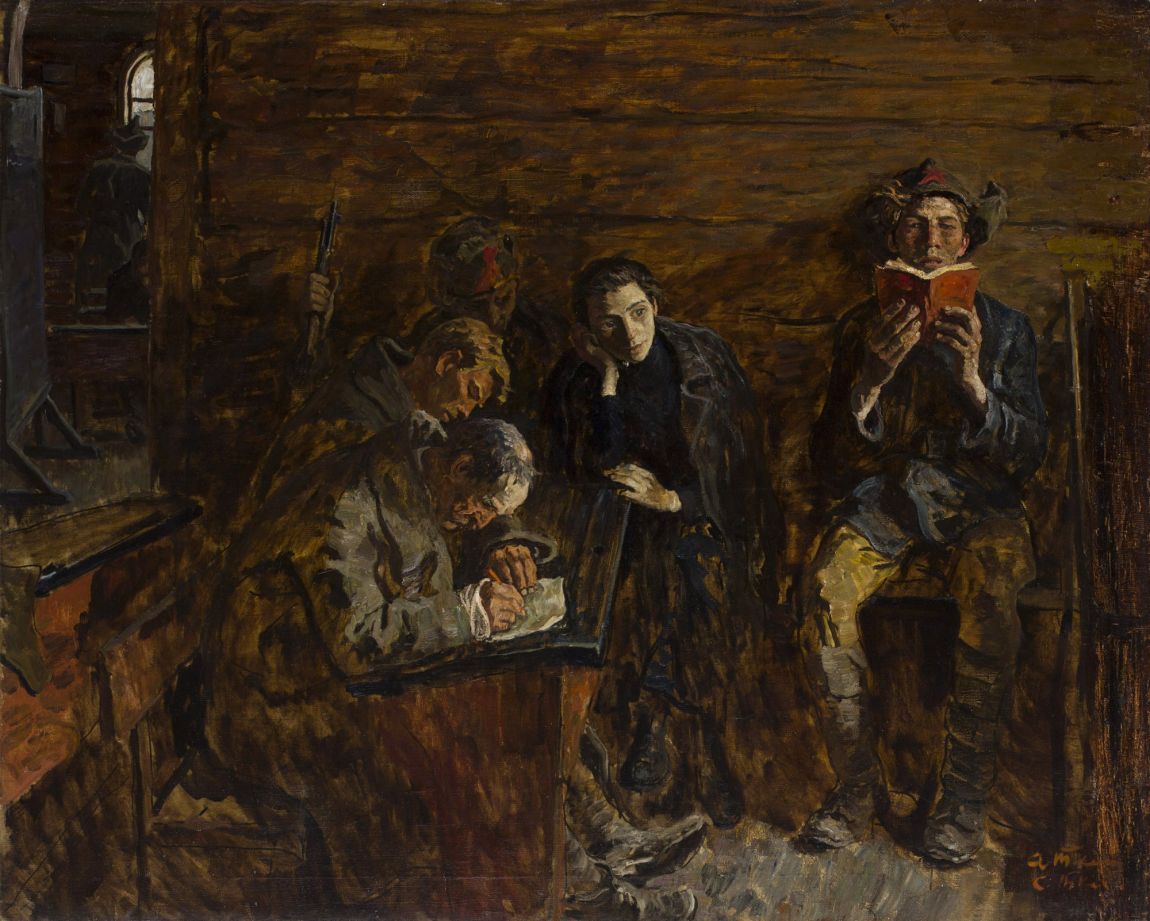Sam and Berry Shoen Soviet Art Collection
The Soviet Art Collection at Carthage features 131 pieces of professional artwork depicting scenes and themes from areas under Soviet rule in the 20th century. Sam and Berry Shoen, longtime supporters of the arts, donated the largest portion of the new collection of oil paintings and drawings from Armenia, Byelorussia, Russia, Ukraine, and Uzbekistan. In total, Carthage received 131 pieces worth $3.8 million.
“It’s important for people to understand art in the context it’s created,”
Sam Shoen said. “Even under the most oppressive regimes,
beauty is created by talented people.”
About the Collection
The Carthage College Sam and Berry Shoen Collection of Soviet Art
The Carthage collection of 131 paintings from the Soviet era represents a cross-section of the extensive body of work created by artists who lived in the USSR. It contains works by renowned artists, recipients of the Stalin Prize and other important state awards, members of major art movements and art associations of the Soviet era, as well as regional artists and constitutes a representative body of work from the time period. It also boasts of several examples of the pre-Soviet and post-Soviet works.
Most of the artists in the collection were members of the Artists’ Union of the USSR and its various branches, and thus they were part of the official art establishment at the time when public discourse was heavily controlled by the ideological apparatus of the Soviet state and the Communist Party. The major vehicle of control was the USSR Artists’ Union, as well as some other organizations, such as state museums, art publications, and mass media.
Soviet art is a unique phenomenon in the history of world art. For seven decades, it existed outside the art market and was not subject to market regulation. Instead, it was regulated by ideological concerns, that were, most of the time, not the concerns of the artists themselves but rather imposed on them by the ruling Party’s ideological apparatus.
The Carthage collection is an important resource for studying the functioning of cultural production under the condition of oppression. It provides plentiful research material that helps theorize on how material conditions and social relations shape culture, as well as understand the specifics of cultural production under state socialism. It also allows us to examine individual strategies Soviet artists chose to navigate the dangerous waters of the heavily censored cultural space, vacillating between survival and servility, on the one hand, and creativity and independence, on the other. The collection provides material to uncover narratives that Soviet artists contributed to the public discourse — inspired by, or sometimes divergent from, official Soviet ideologies. It also provides pictorial material to learn about art styles and techniques prevalent in Soviet art.

